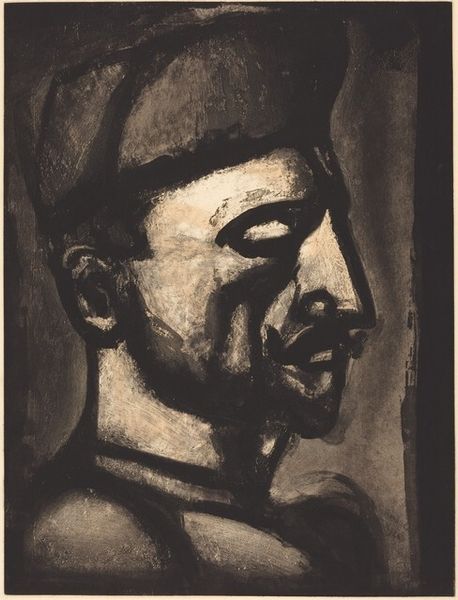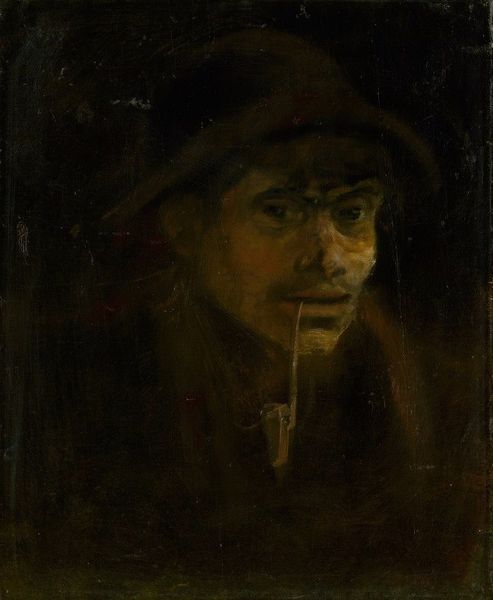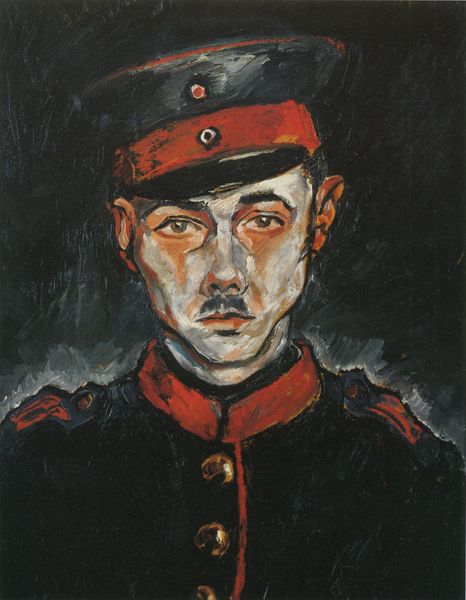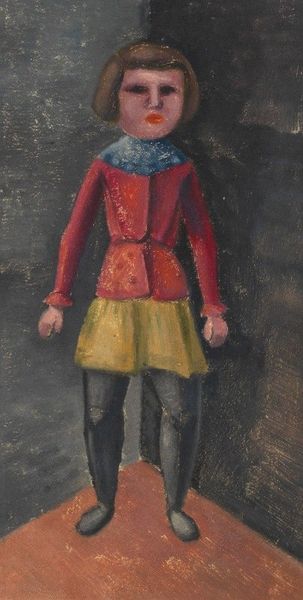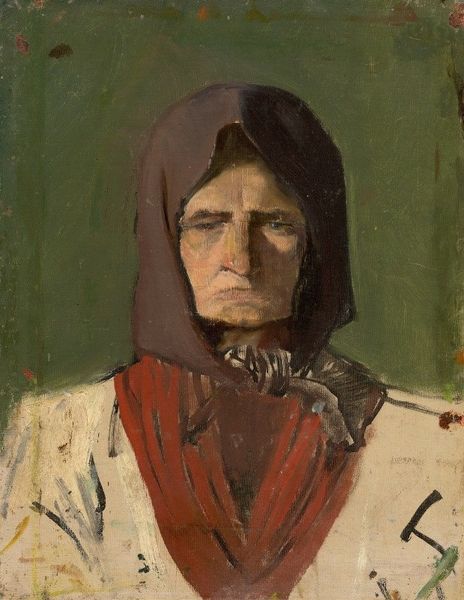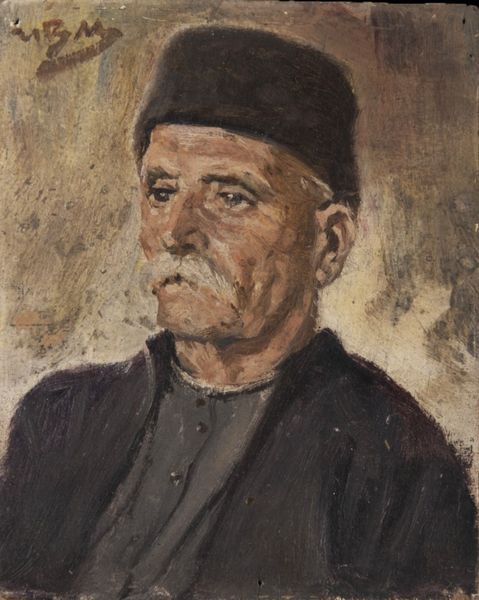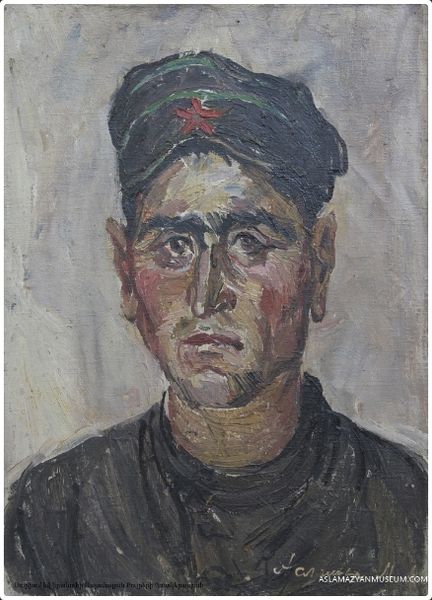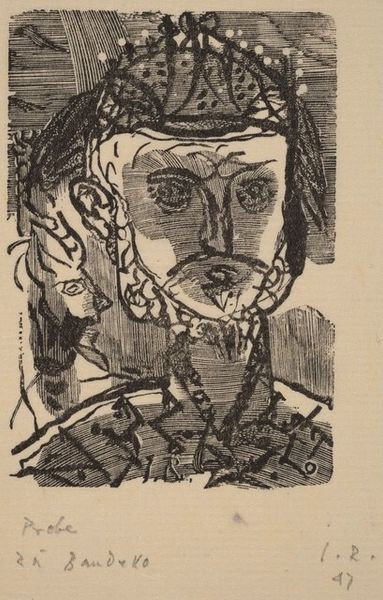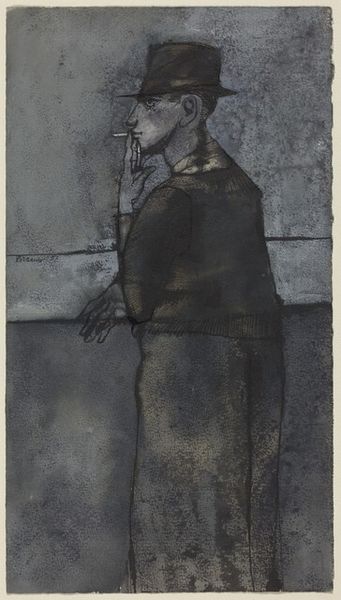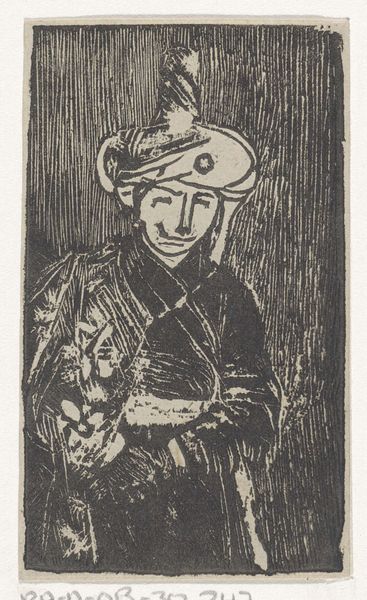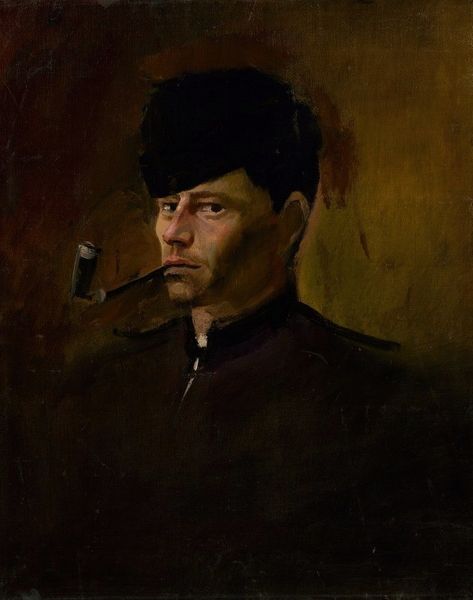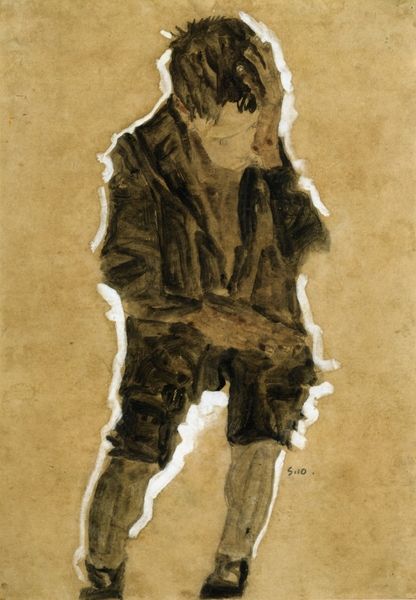
oil-paint
#
portrait
#
self-portrait
#
oil-paint
#
oil painting
#
modernism
Copyright: Corneliu Baba,Fair Use
Editor: This is Corneliu Baba’s "Self-Portrait with Red Fez," painted in 1971 with oil paints. There’s something intensely melancholic about the piece, isn’t there? The darkness almost swallows the figure. What structural elements do you observe that contribute to this feeling? Curator: Precisely. Note the stark contrast – the sombre, almost monochromatic background against the singular splash of colour: the red fez. The hat's vibrancy, rather than alleviating the gloom, serves to isolate the figure further. Consider how the artist’s face is constructed: notice the planes of light and shadow, how they fragment and almost obscure the features. Editor: It’s almost cubistic in its fracturing, even though it’s a representational portrait. Curator: Indeed. The colour palette itself, primarily dark umbers and greys, establishes a clear somber mood. Baba’s brushstrokes are quite visible too; they add texture and depth, but also contribute to an unsettling, unfinished quality, don't you think? Editor: Yes, it definitely feels like a raw and honest portrayal, avoiding any idealization. How does this emphasis on form over, say, emotional expression, inform our reading of it as a self-portrait? Curator: I would posit the "emotional expression" exists within that form. We decode the self, here, not through sentimentality, but through structural and material cues – a rigorous interrogation of what constitutes representation. Editor: That's fascinating. So, by examining these artistic techniques—the somber colors, contrasting hat, fragmented shapes—we find the artist's message is rooted in the visible aspects of art itself. Thank you. Curator: Exactly. It’s a stark reminder of how the artist translates themselves and how we, in turn, read it back, through form and composition.
Comments
No comments
Be the first to comment and join the conversation on the ultimate creative platform.
